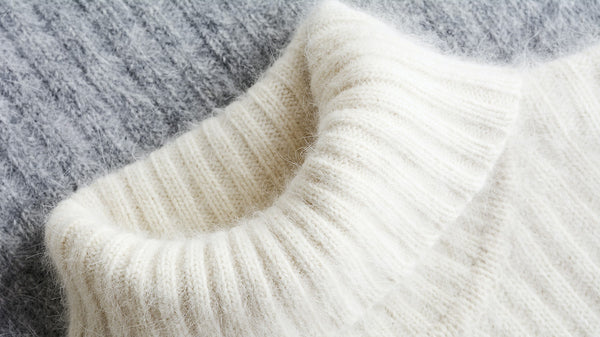Understanding the Various Kinds Of Cashmere a Natural Fiber and Their Unique Benefits

The Beginnings of Cashmere: A Historic Overview
While the lavish touch of cashmere remains to appeal modern-day customers, its origins map back to the severe, chilly climates of Mongolia and the Himalayas. For centuries, the aboriginal peoples of these regions have been raising Capra Hircus goats, the prime resource of cashmere wool. These goats, resilient versus the severe winters, grew a great undercoat to make it through, which later on ended up being referred to as cashmere. The name itself admires Kashmir, a region in India where the woollen was initially processed. Much of the very early cashmere profession course was helped with by the Silk Roadway, connecting Asia with the Center East and Europe. In spite of its worldwide spread, the finest cashmere is still believed to originate from the initial regions of Mongolia and the Mountain Ranges.

The Production Process: From Goat to Garment
Shearing a Capra Hircus goat marks the creation of the intricate cashmere manufacturing procedure. The resultant raw cashmere is after that washed to eliminate pollutants such as veggie, oil, and dirt matter.
The tidy fiber is subjected to coloring, rotating, and weaving, or knitting, to transform it right into a fabric. Complex procedures such as quality assurance checks and finishing processes follow, guaranteeing completion product maintains the luxurious standard expected of cashmere. This meticulous process, from goat to garment, warrants the high price affixed to cashmere products, making them an icon of luxury and refinement.
The Numerous Sorts Of Cashmere: An In-depth Analysis

The One-of-a-kind Advantages of Cashmere: Convenience and Sustainability
Relocating from the selection of cashmere types to the advantages they use, comfort and sustainability stand out plainly. Cashmere, a natural fiber, is renowned for its unequaled soft qualities, giving a level of convenience that artificial fibers can't match.
When it comes to sustainability, cashmere is naturally degradable and renewable, as it's collected from cashmere goats who regrow their layers annually. what is cashmere. Unlike artificial fibers which can take hundreds of years to break down, cashmere's effect on the environment is marginal. This combination of comfort and sustainability makes cashmere a beneficial choice for mindful consumers

Caring for Your Cashmere: Upkeep and Conservation Tips
While cashmere is most certainly a lasting and elegant click resources option, it requires details care to maintain its top quality and prolong its lifespan. To begin, cashmere should be hand washed making use of cold water and a moderate detergent. Stay clear of wringing the garment or turning as it can damage the fibers. Instead, gently capture out excess water and lay it flat on a towel to completely dry. Cashmere items need to be stored in a cool and address dry place, away from straight sunshine and moisture. Using moth repellents can protect these garments from possible damage. It's suggested to stay clear of hanging cashmere to protect against stretching. Rather, layer and shop them effectively to keep their form and top quality in time.
Purchasing Cashmere: Comprehending Its Worth and Well Worth
Although cashmere might initially seem like an expensive investment, its long-term value and worth come to be evident when you consider its amazing top qualities. Known for its unmatched gentleness and warmth, cashmere is a premium all-natural fiber that outperforms various other materials. Investing in cashmere, therefore, is not just regarding current style patterns, however regarding embracing a sustainable, durable, and elegant lifestyle.
Conclusion
In recap, the sort of cashmere one picks, be it Mongolian, Chinese, or Italian, is determined by individual preferences for heat, high-end, sustainability, and budget. The value of cashmere extends past its cost, with comfort and longevity including in its worth. Appropriate treatment and upkeep can guarantee its conservation. For that reason, recognizing the origins, production procedure, and one-of-a-kind advantages of different kinds of cashmere can guide customers in their investment in this glamorous natural fiber.
Whether it's the outstanding warmth of Mongolian cashmere, the price of Chinese cashmere, or the eco-conscious production of Italian cashmere, there's a story to be discovered behind each fiber type. Cashmere, an all-natural fiber, is renowned for its unequaled softness, offering a level of comfort that synthetic fibers can't match.When it comes to sustainability, cashmere is eco-friendly and sustainable, as it's gathered from cashmere goats that regrow their layers yearly. Understood for its unequaled gentleness and warmth, cashmere is a costs natural fiber that exceeds other products. Recognizing the beginnings, manufacturing process, and special advantages of various types of cashmere can assist customers in their investment in this extravagant natural fiber.